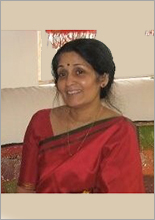Gender and Education in the Arab Region: Primary Education and Adult Literacy – Part I
The Arab region has made significant strides in reducing gender gaps in human development. Countries in the region have taken seriously the MDG goals to eliminate gender disparity in primary and secondary education, preferably by 2005, and in all levels of education no later than 2015. The region has worked hard towards progress in gender parity in the education sector in an attempt to create equal opportunities for women and men. As a result, women in the Arab region are more likely than men to attend university, and fertility rates have decreased over the last few years.
Of particular importance is the region’s progress toward gender parity in primary education. For example, all GCC countries have achieved a Gross Parity Index[1] (GPI) of 1 for primary education, and Mashreq and Maghreb countries hope to achieve the same by 2015. As recently as 1999, only six countries in the region had already achieved gender parity in primary education, but have succeeded in maintaining this parity to the current day. These countries are Jordan, Kuwait, Oman, Palestine, Qatar and UAE. In addition, Syria also achieved the same parity level a few years ago.
However, several challenges remain particularly in the area of gender disparities in enrollment and literacy. Global Monitoring Reports indicate that in 2006 more than 60% of primary school aged children not enrolled in school were girls, and 53 percent of them were expected never to be enrolled compared with 39 percent of non-enrolled boys.
A similar gender disparity can be found in adult literacy. Adult literacy among women in the Arab region demonstrates the greatest gender disparity. In 2005, the average GPI for literacy in the region was 0.74. As recently as 2011, roughly 47.6 million adults lack basic literacy skills in the Arab region and more than 66% of these are women. In 2011, the total number of non-literate adults was 47.6 million, and Egypt and Morocco account for 54% of illiterate adults. Six other countries (Algeria, Iraq, Saudi Arabia, Sudan, Syria, and Yemen,) face the challenge of reaching more than two million adults in literacy. In seven countries (Jordan, Libya, Mauritania, Palestine, Syria, Tunisia and Yemen), 70% of non-literate adults are women. The most striking gender disparities were in Morocco and Yemen where literacy rates for women were less than two-thirds of that for males. Fortunately, projections to 2015 indicate that adult literacy rates will continue to rise. However, in some countries, the absolute number of non-literate adults will actually increase, due to population growth and lack of capacity in the school system to meet educational needs of a larger number of children. Unschooled and inadequately schooled children will both join the ranks of youth and adult without literary competencies.
As is seen in this blog and the following one, gender parity and gender equality in education remain elusive for the region. Responding to the needs of youth and children in the region presents several challenges. Further improvements in the education environment and quality of education are critical to increased access to education in the region. A post-2015 agenda for education demands that countries work to anchor education in a lifelong, sector-wide perspective that addresses access, equity and quality for all at all levels of education. This agenda should focus on the young girls and women and protect and promote girls’ right to education. As reflected in a recent UNESCO report for the region, countries need to develop laws and policies that help achieve gender parity, and these laws and policies must be updated and implemented vigorously.
The second part of this blog, Reduced Gender Parity up the Education Ladder, examines just how far Arab countries have come and what still remains to be done.
Read Part II
[1] The Gender Parity Index (GPI) is the ratio of girls to boys in primary, secondary and tertiary education, and the ratio of the number of female students enrolled in primary, secondary and tertiary levels of education to the number of male students at each level.
Rema Nair Balasundaram is a professional in the area of education in Asia and Africa. She has worked extensively, leading operational teams, in the education sector for the World Bank, UNDP, ADB and the IFC. She has led delegations and task forces for technical assistance in Asia and Africa, focusing on primary education, secondary education and tertiary education over the years. She has also led operations and evaluations of Joint, Global and Regional Programs in the Education sector in Asia and Africa. She has graduate degrees in Development management, and Food Science and Nutrition, and a major in Public and Economic Policy.
